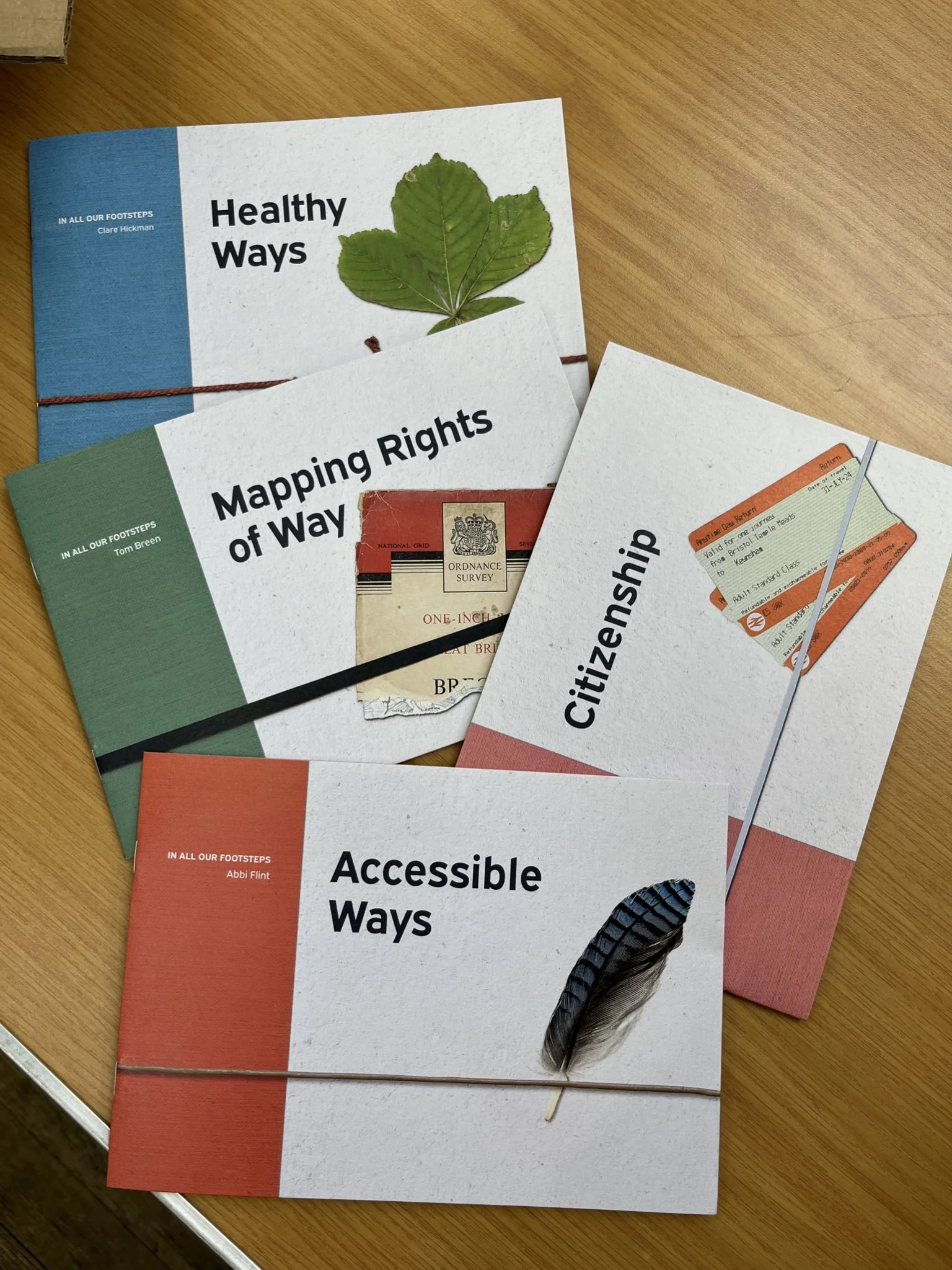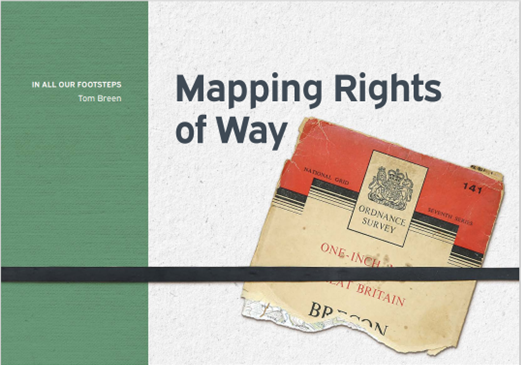The ‘All Footsteps’ Project Booklets: Summarising three Years of Research
As we come to the conclusion of this AHRC project, the In All Our Footsteps team have produced a series of short booklets outlining key themes and findings of the project; Mapping, Healthy Ways, Accessible Ways, Citizenship and Working on Paths. We hope that they will be of use to activists, policy makers, those involved on the ground and those who experience rights of way by whatever mode they choose/are able to. As well as including historic research, the booklets relate to current and future themes in planning, mapping and using rights of way so we hope are useful guides when thinking about the various challenges faced.
The 5 themes in each booklet are briefly outlined here, with links to download them from our publications page.
Mapping Rights of Way by Tom Breen
Mapping our rights of way is vitally important in order for rights to be both protected and managed into the future.
Understanding how England and Wales have approached mapping rights of way since the introduction of the definitive map is critical if we are to effectively plan for the future. Some reasons include: the difference between policy in theory and in fact, the actual process of making theoretical access really embodied, the gap between vision and reality on the ground, especially given resource constraints and administrative fracturing, and the divergent approaches taken by the responsible local authorities. This project has tracked this process since the Second World War, and this booklet contains case studies and policy recommendations that have emerged from our historical work.
Healthy Ways by Clare Hickman
Since the advent of industrial modernity, being able to access ‘the countryside’ with its fresh air has often been seen as one key to healthy living for town and city dwellers.
Rapid urbanisation and associated waves of disease - from Cholera, through Tuberculosis to Covid - further heightened attention to this idea. In the twentieth century, public rights of way often became the means of accessing the rural. These imaginaries of the healthy rural environment became further entrenched as more people became town- or city-dwellers and the rural became ever more viewed as a site of healthy leisure rather than work. However, there have always been inequalities in terms of who can access this public good: such divides became more visible both during and after the acute phase of the Covid pandemic. Understanding changing conceptions of health and disease is then vital when considering the long history of rights of way and access to rural places.
Accessible Ways by Abbi Flint
Disability, defined as a long-term physical or mental health condition or illness which limits people’s day-to-day activities (Equality Act 2010), impacts a large number of people across England and Wales. The 2021 Census data indicated that 17.7% of people in England and 21.1% of people in Wales experience disability.
The benefits of accessing public rights of way (PRoW) - i.e. the network of footpaths, bridleways, restricted byways and byways in England and Wales - can be just as important to disabled people as they are to their non-disabled peers. However, disabled people have historically experienced inequality in access to these benefits. In 2022, the #WalkCreate project found that 11.8% of respondents to their questionnaire indicated barriers to getting our walking linked to physical or mental health issues.
This booklet focuses on the historical context of accessibility and its intersection with histories of technology and the physical aspects of path infrastructure. It is informed by policy and archival material, alongside go-along interviews with people using mobility scooters on a ramble organised by the Disabled Ramblers, to understand how these entangled histories have shaped present-day accessibility of the PRoW network.
Citizenship by Glen O’Hara
Rights of way, and rights of access, are about places, belonging, and identity.
One way of belonging is being part of a nation: citizenship can be defined as the general and specific rights we all enjoy as part of a national community, and how as individuals and groups we experience those rights. The history of rights of way can act as one portal through which we can understand different ideas about citizenship in the recent past. Political concepts are critical here.
In the 1940s, the post-war Labour government’s idea of a ‘new Briton’ was part of a planned state and society, while by the 1960s, concepts around individual experience and endeavour had replaced many of those emphases. Around the turn of the twentieth and twenty first centuries, a new fusion emerged under New Labour, again stressing increased rights for the individual, but only when held in tension with a wider compromise about land use and access.
Working on Paths by Abbi Flint and Tom Breen
There are over 140,000 miles of public rights of way in England and Wales, and recent research by the Ramblers, as part of their Don’t Lose Your Way campaign, indicates there are a further 49,000 miles of historically and currently used paths which should be added to this network before the new deadline of 2031. Since rights of way are free at the point of use, the enormous amount of work that goes into enabling this access is often overlooked.
Everyone has a legal right to pass and repass over all public rights of way (which includes footpaths, bridleways, restricted byways, and byways open to all traffic). However, there is considerable work involved in enabling people to use this right, both on the ground and behind the scenes. This includes identifying, registering, and mapping rights of way, and installing and maintaining the physical infrastructure that make access possible. This booklet explores the historical context for the different dimensions of this work and who undertakes it, highlighting how these often invisible and voluntary contributions play a fundamental role in the past, present, and future of the public rights of way network in England and Wales
Taken together, these different themes demonstrate both the problems and opportunities presented when we come to maintain, use and plan for our rights of way - past, present and future. They exist legally on maps, politically in our conceptions of what it is to be a citizen, in policy, imagination and experience as healthy and accessible ways - and as all the labour and emotions that go into them. The struggles involved in legislating for, marking out, clearing, defending and understanding them are manifold, and never as simple as they look. That alone seems a key finding of ‘In All Our Footsteps’.
We hope that you will find these booklets highlight these themes and many others, and if you do use them in any way in your own work please let Glen O’Hara or Clare Hickman know, as we would like to hear about it!
With thanks to Disabled Ramblers, the Monday Group, the Centre for Outdoor Accessibility Training, and the Peak and Northern Footpaths Society for conversations and materials that informed some of these booklets. Also thanks to our advisory board and particularly Sarah Bell, Jack Cornish and Kate Ashbrook for commenting on drafts of these booklets.





